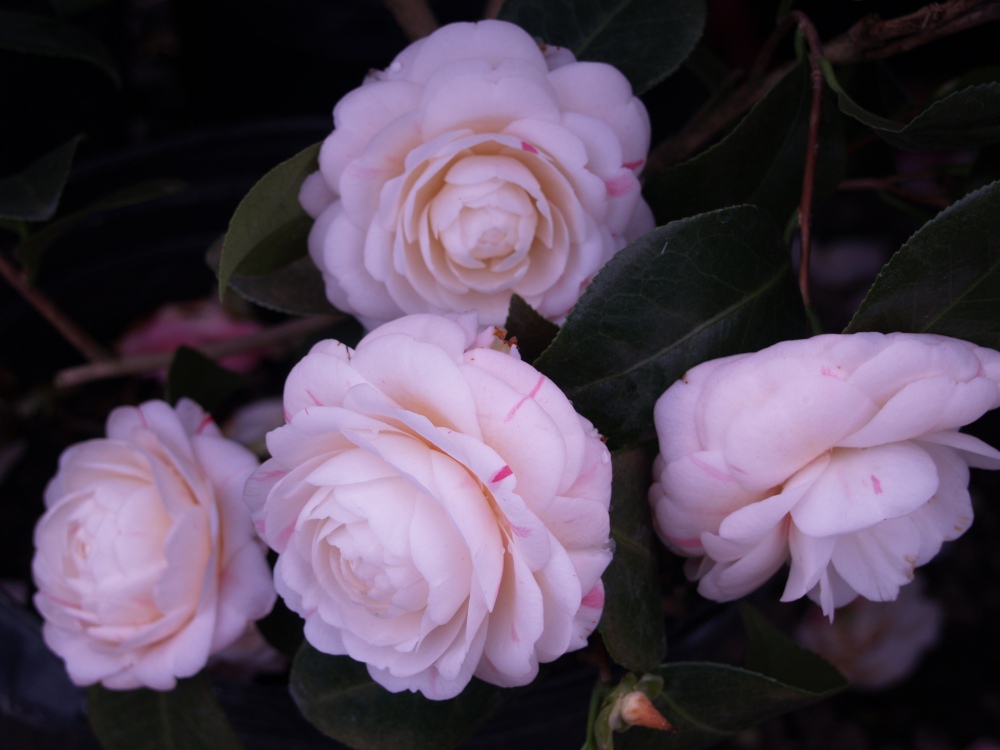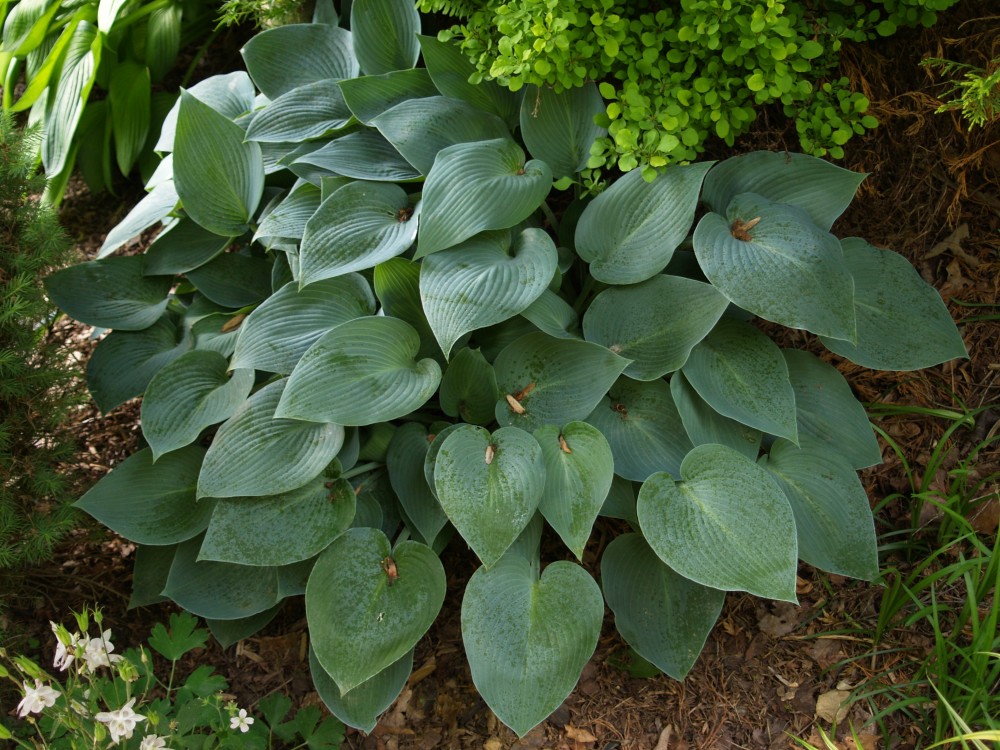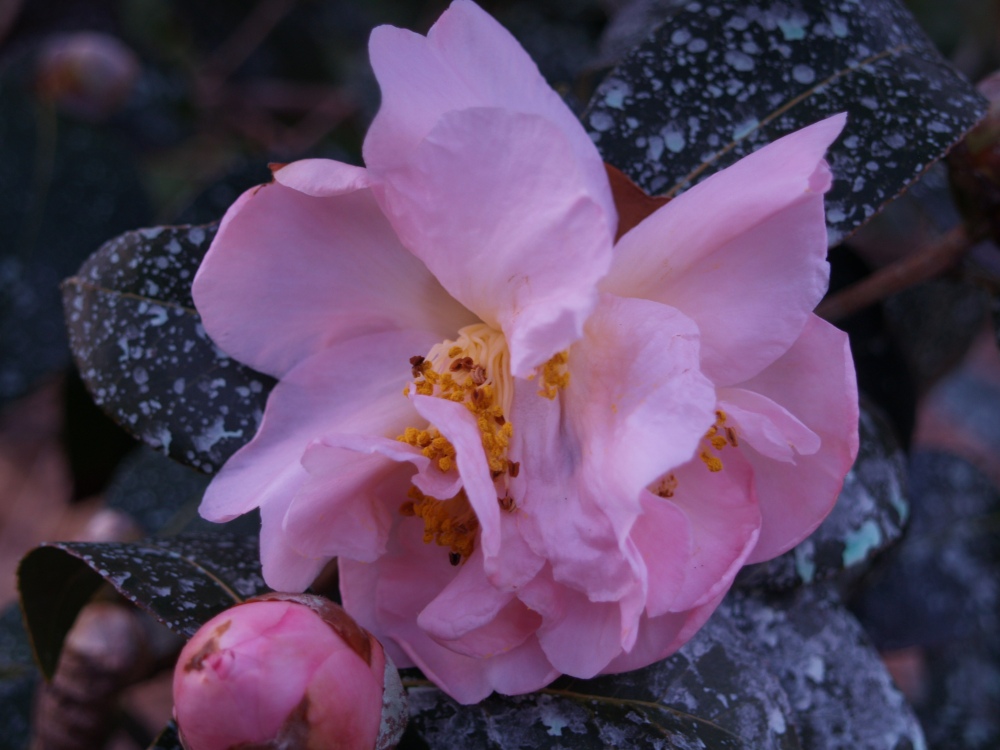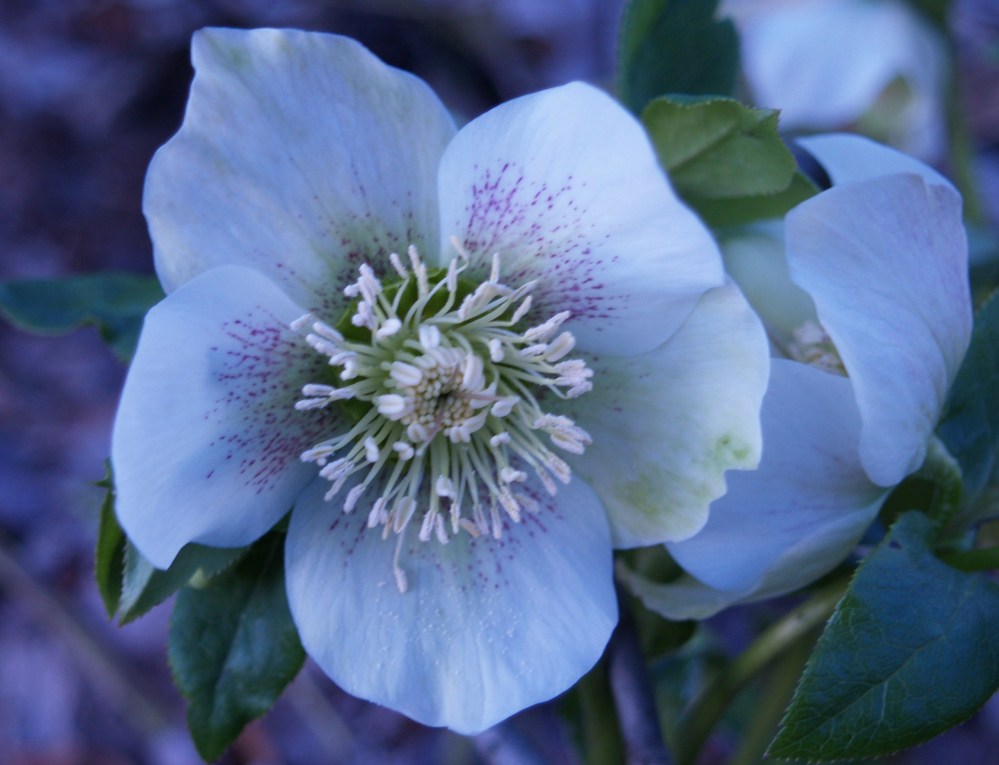Now I’m convinced!
Sitting for lunch on a dreary weekend day in February five or six deer wandered single file through the wooded area bordering my back garden, never stopping for a moment to take a sniff or munch on the camellias (below) or aucubas that had suffered such damage the previous winter. I felt a momentary guilt for depriving these creatures of a meal that they had depended on until recently, and food sources were likely to be scarce through the deep snow.
Once melting was underway I could see numerous deer tracks in the mud and remaining snow, but saw no damage to plants. None.
I had reserved judgment, not completely convinced of the effectiveness of the deer repellents, but after a year I have seen sufficient evidence to have no question. If you spray every four weeks beginning in April through October, and apply a winter repellent to evergreens in November, you will not have a problem with deer eating your garden plants.
I’ve heard the naysayers, repellents didn’t work in their garden, or the sprays will wash off in rain. I’m confident in stating that the reason the repellent didn’t work is that the gardener waited too long between applications. I’ve found that spraying on the first weekend of the month works well as a reminder for me, but in past years when I forgot and strayed to six weeks I was reminded when my hostas began to disappear.
In the past year the spring was as wet as any in my garden with nearly twenty days of rain in May, but still I had no problems with the repellent washing off. I was concerned , and watched carefully, for I feared that any day deer would ravish the hostas. It never happended, though the repellent didn’t deter the slugs who were about in record numbers.
My only concern is with the winter repellent, the brand of which escapes me, that seems as if it will persist forever. The white coating on the leaves was acceptable through the winter, but now I want to see green leaves, and the camellias are spotted in white. The warm season repellents are clear, or at least nearly so, but I’ll have to reassess my choice of sprays next fall.
Today, in early April, the temperatures are much warmer than is usual, and after a slow beginning due to the heavy snow cover, the garden is quickly catching up, and is probably further along than whatever could be considered normal.
I would hardly be surprised if the redbuds were to bloom (above) in the next week, seven to ten days earlier than average in my garden, but then normals and averages allow for a range of earlier’s and later’s, and I suppose that it all balances out over one’s lifetime. In any case you will not hear a complaint from me, nearly in a panic as I was that the poor helleborus (below) were blanketed in snow when they should be in bloom, and what would become of them.
I knew, or should have known, that all would survive without a problem at all. Unfortunately, the remainder of the garden did not escape without considerable trauma, less than initially feared, but broken and bent branches that will remind of the storm for years.
Today I assisted my son in cutting down a forty foot Leyland cypress that fell apart in the snow with branches splayed in every direction. Of course it was far too large, and the branches that hung low over more cherished plants were too cumbersome to be able to pull back upright with straps or wires. I was never fond of the cypress, planting it only to witness the prodigious growth rate Leylands are valued for, so I am not so disappointed to see it go. It did grow quickly, and larger than any that I have seen elsewhere, obviously content with the bottomland soil in this part of the garden.
I would hope to be considered a more able gardener than to be renowned for growing the largest Leyland cypress that has been seen in these parts, but the evidence has been chainsawed into pieces and hauled away, so now I can fill this spot, a wider area than you would suspect while the tree is standing.
The cypress had grown to shade a fine hinoki cypress and several boxwoods that were unfortunate to be planted close by with the assumption that neither would grow large enough to conflict with the other. The hinoki and boxwoods have struggled as the Leyland encroached, and now that the monster has been slain they will have their first unobstructed view of the sun in some years. It will be interesting to see how they handle the changed conditions.
In dropping the tree we were able to guide it precisely between a contorted filbert (also known as Harry Lauder’s Walkingstick, and this one was adopted as a favorite by my young son twenty or so years ago) and a wide spreading dogwood that was believed to be pink when planted many years ago, but turned out to be white. I never minded the incorrect tagging from the nursery, for the native white dogwood (below) is as splendid a tree as has been created.
The excellent marksmanship in guiding the cypress between these treasures can be attributed more to brawn than brains, since neither my son nor I are experienced in working with large trees, but I am blessed with a “large frame” and he is competent with a chainsaw. He cuts, I lean, and the tree falls squarely atop an old China Girl holly, but inflicts no more than a scratch on the dogwood.
I will consider what else to plant in the fifteen foot wide area left open by the Leyland’s demise. There is a marvelous variegated leaf redbud to one side and the dogwood to the other, so that should rule out a deciduous tree in between, but I will at least consider the miserable existence that has been forced on the hinoki and boxwoods hidden in the shadows for so many years, so perhaps another large evergreen would be a mistake. I’m certain that it will be worked out quickly with a visit to the garden center where inspiration comes quickly and often. It is safe to say that I will not have to consider whether the new plants are deer resistant.
what specific (name names!) deer repellants have you used/do you recommend. I am stumped with the choices and find some smell so bad that it lingers for days. Would really appreciate your input. thanks
I use two different repellents as a test to see if one is better than the other, but both seem equally effective. I use Deer Stopper and Bobbex, but I am confident that other similar products will be just as effective. I have not used soap or sprays such as coyote urine so I cannot vouch for their effectiveness. The formulations that I’ve used are smelly in the container, and they stink up my garage when I open them, but in the open air I can’t smell them unless my nose is two inches from the leaves.
I am so disgusted with these nuisance deer and yet my husband enjoys them beyond belief. I guess because I am the gardener and he is the observer. Last year I used Irish Spring and it worked and stopped them in their tracks but I was always on edge not knowing when and if they would attack when I was least concerned or ready for them. If there is such a thing as being ready for them. This year, the deer population is out of control and must be curtailed to avoid inner breeding and the other residential problems that are associated with them. This year I made up my own concoction of tabasco, garlic powder and a teaspoon of dishwashing detergent and sprayed all in sight. I also bought over the counter a spray, I think (bottle outside in garage) called Bonide. That works good but spray and respray is the key.
I am the gardener and my wife the observer, but she was the more concerned when deer began to invade our garden, a little at first, then more, until most of the hostas were disappearing. I’ve heard of homemade concoctions being effective, but my concern is that their durability might be quite short during rainy periods, while I’ve found that the brand names last at least a month. Good luck in your efforts.